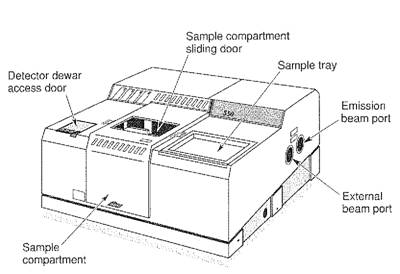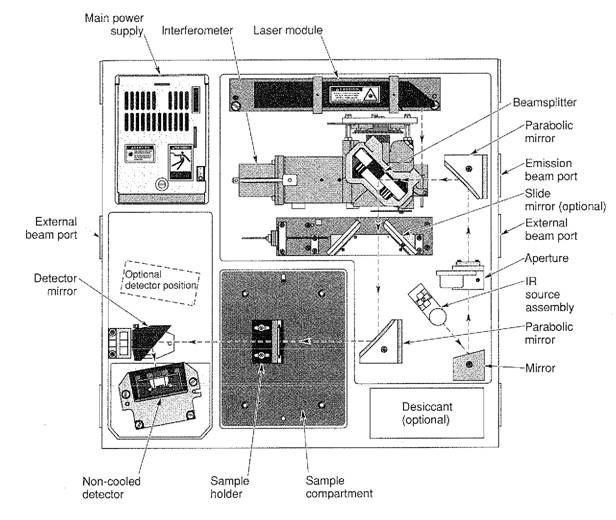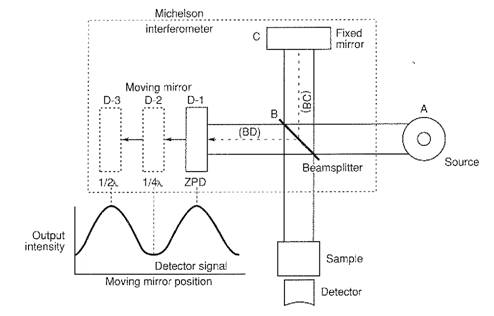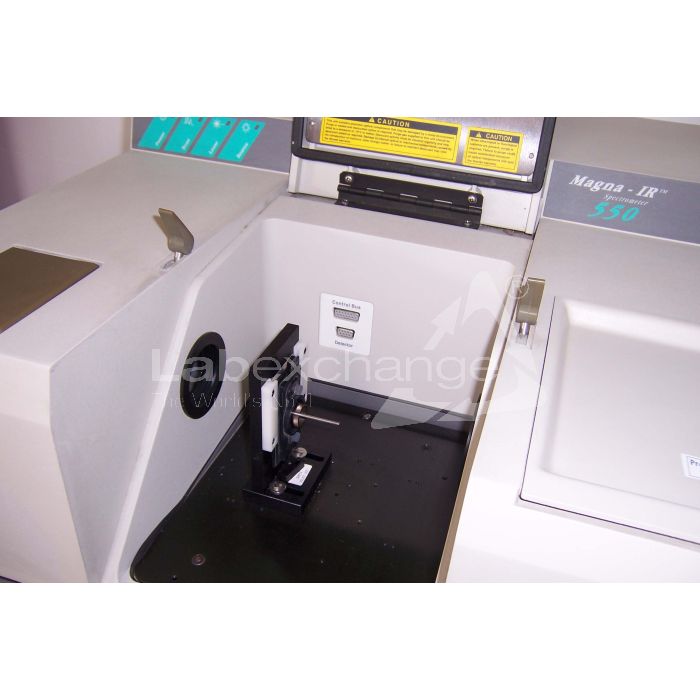Nicolet Magna IR 550
| Objektnummer | B00017277 |
|---|---|
| Numéro d'identification | 017277 |
| Nom de l'objet | Nicolet Magna IR 550 |
| Statut | Stock unit |
Groupe de produits: Spéctromètres infrarouge
Statut, conditions de livraison et de paiement
Vérification des appareils
Les appareils d’occasion sont vérifiés par Labexchange Service GmbH avant la livraison. Vous recevez des appareils entièrement fonctionnels.
Délai d'expédition
Les délais de livraison indiqués sont les plus rapides pour l’article en cause. Les délais de fait peuvent varier au cas par cas. Les délais de livraison définitifs sont indiqués dans la confirmation de commande.
Nous offrons des livraisons collectives par principe. Le délai de livraison s’oriente à l’article avec le délai de livraison le plus long. Une livraison partielle est possible par prix additionnel.
Méthodes d'expédition
Courrier, agences d'expédition, autocueillette, livraison par flotte de Labexchange
Conditions de livraison
Prix plus frais d’expédition. Les frais d’expédition indiqués sont à prévoir. Dérogations éventuelles sont possibles.
Si les coûts de transport ne sont pas spécifiés, s'il vous plaît demander séparément les frais de transport. Les frais de transport et d'emballage indiqués se réfèrent à l'itinéraire de transport le moins cher et sont sujets à des augmentations de coûts imprévues. En raison d'événements imprévisibles, les tarifs de transport et les délais de livraison peuvent changer à tout moment et doivent être adaptés à la situation actuelle. Incoterm codage selon les Incoterms 2010: Pour personnes qui viennent chercher les dispositifs elles-mêmes: EXW, pour les expéditions par voie maritime: CFR, par avion: CPT, d'autres expéditions: DAP. Remarque: Nous n'établissons pas des preuves préférentielles/EUR1. Dans le cas d’un enlèvement par vos soins/EXW de pays à l’intérieur ou à l’extérieur de la Union européenne, nous devons conserver 16% de TVA d’acheteur comme dépôt de garantie, jusqu’à ce que nous ayons reçu l’attestation de reception/la prevue de livraison.
Modalités de paiement
Nous n’acceptons pas le paiement par lettre de credit, PayPal, etc. Dans tous les cas le montant est payable sans déduction. Jusqu’au paiement complèt l’équipement reste notre propriété. Un escompte n’est pas accordé.
|
Pays |
Modalités de paiement possible |
Remarque |
|
DE, AT, CH |
Paiement par facture, prépaiement, par carte de credit |
Paiement par facture est possible pour clients professionnels. |
|
NL, BE, LU |
Paiement par facture, prépaiement, par carte de credit |
Paiement par facture est possible pour clients professionnels. |
|
Autre pays |
Prépaiement, par carte de credit |
|
Nos conditions de vente, de livraison et de paiement sont en vigueur. Vous pouvez télécharger les documents ici.
La vente intermédiaire nous est réservée.
Défintion des statuts
Tous articles sont d’occasion, sauf si explicitement défini comme « appareil neuf ».
|
Statut |
Condition |
Remarque |
|
Immédiatement disponible |
Occasion |
L’article a été déjà entièrement vérifié et peut être envoyé directement à vous. |
| En stock |
Occasion |
L'article est en notre stock, mais doit être vérifié avant la livraison par nos techniciens Vous recevez des articles entièrement fonctionnels. |
|
Publié |
Occasion |
L’article est toujours au l’offreur. Nous achetons, vérifions et en fin livrons l’article après votre commande. Le certificat de fonctionnement ainsi que le rapport de service sont inclus à la livraison. |
|
Appareil neuf |
Neuf |
C’est un dispositif neuf. L’article n’est pas utilisé et neuf d’usine. En ce qui concerne des article neufs, la garantie du fabricant est valable. |
|
Labprocure |
Occasion |
Responsable du contenu de l‘offre d’appareil est la société Labprocure GmbH, comme annonceur. Labprocure assume la responsabilité des offres annoncées ici ainsi que des photos et des textes d’offre inclus. Labprocure GmbH, Bruckstraße 58, 72393 Burladingen. |
manufacturer : Nicolet
model : Magna IR 550
annotation : Dokumente engl.
The following illustrations and descriptions refer to the instrument model and are drawn from brochures. They do not represent the scope of delivery. Please refer to the text of the offer for the exact scope of delivery.

Nicolet's Magna-IR System 550 is a complete spectrometer capable of up to 0.125 cm-1 resolution. The interferometer Features Auto-Tune system alignment and continuous dynamic alignment. Using precise Digital Signal Processing (DSP), the interferometer provides exact scan reproclucibility and collection of miaute signals.
The System 550 is designed Wand-, near-, and far-infrared spectral range coverage. Spectra may be collected and sequentially stored at raten of up to 20 scans per second using the Rapid Scan option.
All optical bench functions are fully automated and controlled via Nicolet's OMNICTM software. Diagnostic status of all system components is reported to the FT-IR workstation. Multiple scanning velocities, a variable-diameter aperture, and multiple beam paths enable a wide array of experimental conditions.
The system has beeis designed so that you can install it yourself. You can also replace key parts of the optical bench, such as-thelaser and infrared source.
Optical Bench Description
The major components of the System 550 optical bench are identified and briefly described in düs chapter. Components are listed according to their order in the path of the infrared (IR) beam.

Source The IR beam of radiation is produced by the source. The System 550 is equipped with an Ever-GloTM mid-IR to far-IR source or a tungsten-halogen, near-IR source.
Aperture The aperture is a variable-diameter opening that can be adjusted to
control the arnount of IR radiation that reaches the sample.
The aperture can also be adjusted to achieve maximum spectral resolution.
Interferometer From the source the beam is reflected from mirrors into the interferometer, which splits the beam, modulates the intensity of all frequencies of IR light, and then recombines the beams. The interferometer features Auto-Tune system alignment and continuous dynamic alignment.
Beamsplitter This device inside the interferometer separates the beam into two beams of nearly equal energy. One of the beams is reflected from the beamsplitter to a fixed mirror and then back to the beamsplitter; the other beam is transmitted through the beamsplitter to a moving mirror and back to the beainsplitter, where the beams recombine.
Moving mirror While reflecting the IR beam back toward the beamsplitter, this mirror moves toward and away from the beamsplitter in a repeating cycle. This motion enables the computer to subsequently convert the beam to an IR spectrum.
Laser The laser is used as an internal calibrator in FT-IR instruments because it emits light at a known and constant frequency. All spectra are coliected at precise laser-calibrated points which generate wavenumber accuracy better than ±0.01 cm -1 . The laser helps control the moving mirror's position and signals the capture of data.
Sample compartment Samples are placed fiere for analysis. A focused IR beam. passes through (or reflects from) the sample and goes an to the detector.
Detector After beeng absorbed at specific frequencies by the sample, the
remainder of the beam is focused onto the detector, which produces an electrical signal in response to the energy striking it. The signal is sent to a computer for processing. The System 550 Features interchangeable detectors and has a dual detector option.
Sampling accessories Most accessories fit into the sample compartinent, but some require separate housing and optics. Nicolet offers auxiliary experiment modales, rnicroscopes and gas chromatography interfaces with the System 550.
Accessories that have their own optics require an external beam option. Mirrors are repositioned by computer commands to direct the IR beam through a port on the right or left si.de of the bench. The beam then travels into the accessory's optics.
Also available is an emission betan option, which allows collimated radiation from an external IR source to be directed through a port in the right side of the main bench and into the System 550 optics.
Note If you would like more information on how FT-IR spectrometers work, real the next section, "Fundamentals of IR Analysis."
Fundamentals of IR analysis
Infrared (IR) spectrometers measure the interaction of IR radiation with experimental samples. Spectormeters measure the frequencies at which the sample absorbs the radiation, and the intensities of the absorptions.
Determining these .frequencies al lows identification of the sample's chemical makeup, since chemical functional groups are known to absorb light at specific frequencies. Identification of what makes up the sample is called qualitative analysis, one of two major applications of IR spectrometry.
The other application. is quantitative analysis. The intensity of an absorption is related to the concentration of th.e component. After the spectrometer is calibrated, which establishes how concentration changes affect absorbance changes, the absorbance for an unknown sample can be used to calculate concentration.
Intensity and frequency of sample absorption are depicted in a twodimensional plot called a spectrum. Intensity is generally reported in terms of absorbance, the amount of light absorbed by a sample, or percent transmittance, the amount of light which passec through it. Frequency is usually reported in terrns of wavenumbers.
What makes up an unknown sample, and how rauch of each component is present in that sample, can be invaluable infortnation. Its many applications incl.ude research and development of new products, quality control of manufactured goods, forensic analysis and environmental testing.
FT-IR Spectrometers and how they work
IR light from the source ("A" in the Sketch below) is directed into the Michelson interferometer, the key component to FT-IR spectrometry. The interferometer modulates each wavelength of IR light at a different frequency.
In the interferometer the light beam strikes the beamsplitter (B), as shown below. About half of the light is reflected from the beamsplitter and is directed anto the fixed mirror (C). The remainder of light is transmitted through the beamsplitter and is directed onto the moving mirror (D). When the beams recombine, constructive or destructive interference occurs depending an the position of the moving mirror relative to the fixed mirror.

When both mirrors are the same distance from the beamspliner, the two reflected beams pass through exactly the same pathlength and, consequently, are totally in phase (distance BC = BD). The resulting signal intensity is at its maximum, a point called the Zero Path Difference (ZPD).
The modulated beam is reflected from mirrors to the sample, where selective absorption takes place.
From the sample the beam travels an to the detector, which translates the beam into an electrical signal.
The cosine waves produced by the source and modulated by the interferometer appear to the detector as ar7 interferogram, a signature of intensity versus mirror position. The interferogram is a summation of all the IR light frequencies; for all practical purposes it cannot be interpreted in its original form.
The signal from the detector is sent to a computer and converted into an IR spectrum through a mathematical formula called Fourier Transform (FT). The formula calculates- the ampl.itude of each of the component signals. The amplitude gives the intensity at the corresponding wavelength of light.
Zero path difference
Laser Specifications:
The source of laser energy in the System 550 optical bench is a nominal 1 milliwatt (maximum 1.2 milliwatt), continuous 632.8 nm laser head. In some jurisdicitons you may be required to register the optical bench, check with your companys safety officer or your local government offices. The following is an excerpt from the laser manufacturers manual regarding the information that might be needed for registration.
Manufacturer Melles Griot
Type of Laser Helium Neon (Hehe)
Wavelength 632.8 nm
Minimum Power 0.7 mW (TEM 00 )
Nominal Power 1.0 mW
Maximum Power 1.2 mW
Beam Diameter 0.65 cm (1/e 2 )
Beam Divergente 2.0 mrad
Spacing Cl2L 1039 MHz
Operating Voltage 12 VDC
CDRH Classification IIIa





